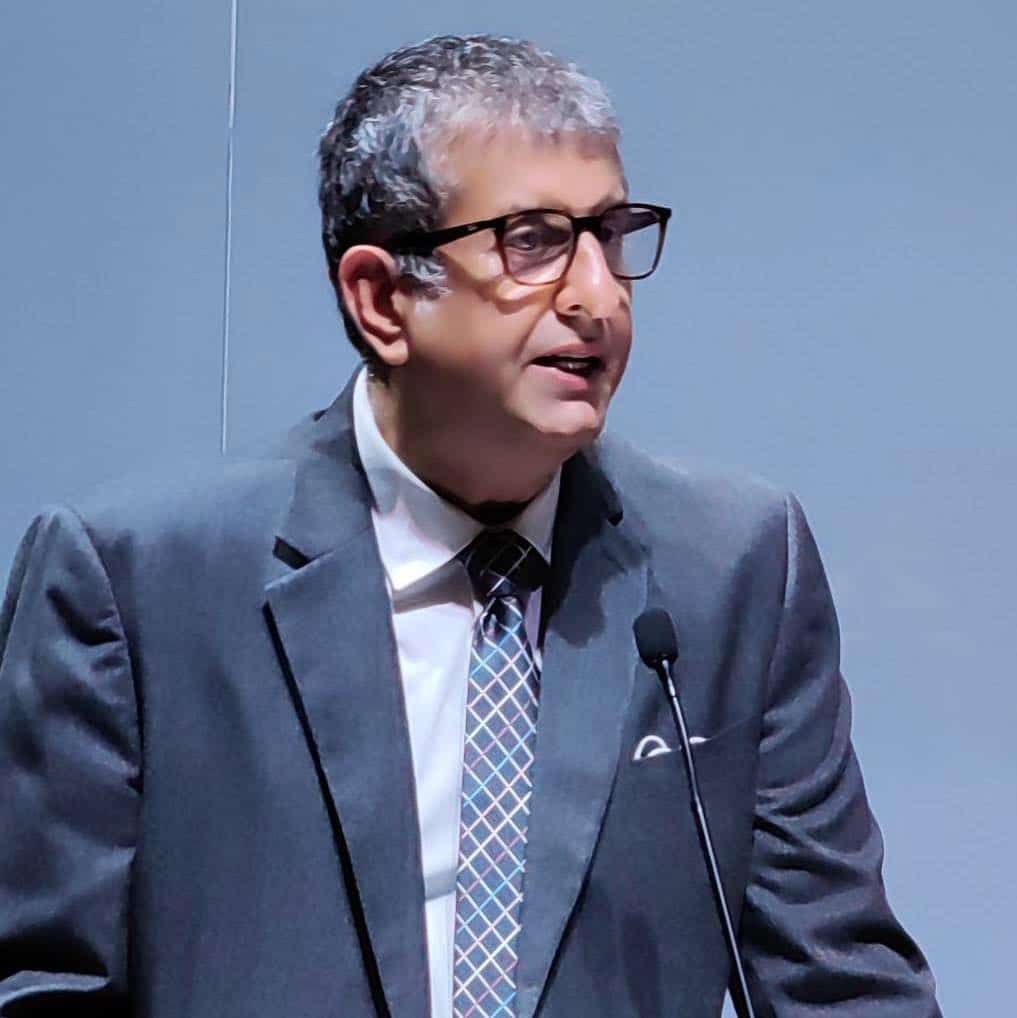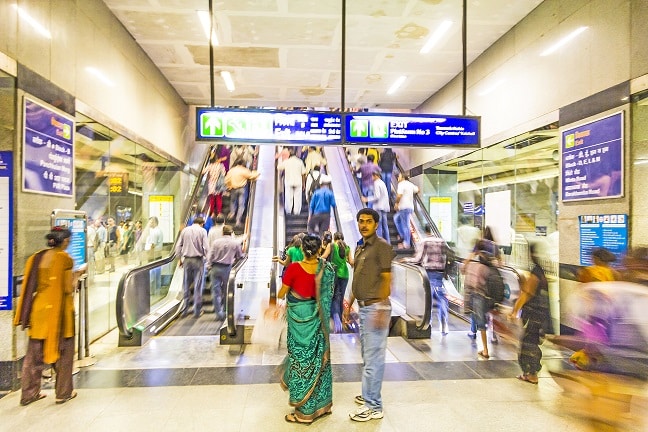Today’s India is no longer the same and will never be the same again. With its internal potential and government policies to build a “New India,” it has now emerged as a powerful nation with the world’s third-largest economy (according to World Bank estimates). India’s population of over 1.4 billion people, the world’s largest population which has already surpassed that of the People’s Republic of China since early 2023, means India is full of young workers and increasing domestic consumption demand, leading to the country’s economic growth.
Asst. Prof. Surat Horachaikul, Director of Indian Studies Center of Chulalongkorn University, spoke of India that “India nowadays is very different from in the past, and it will be even more changed in the next 10 years. No one can stop the development of India.”

Director of Indian Studies Center of Chulalongkorn University
“India is a big market in the world and an investment opportunity. There are many opportunities for cooperation in New India. Thai people should adjust their view of India in order to see and seize the opportunities from New India before anyone else. They need to reduce their prejudices and open their minds to understand Indianness, which will allow for a chance to learn many new things.”
In this regard, Asst. Prof. Surat spoke about the factors that create New India that Thai people should know, including opportunities, obstacles, and increased cooperation, which could continue to grow in the future between India and Thailand.
Narendra Modi: New India Leader
Every government of India has tried to lead India towards the so-called New India, emphasizing continuity in economic and infrastructure development. This is especially true under the leadership of Prime Minister Narendra Modi, who has held this position for two consecutive terms, making the New India movement continuous, tangible, and accessible via “mobiles.”
Asst. Prof. Surat made a gesture of raising a mobile phone and proudly stated, “When talking about Premier Narendra Modi, the first thing that comes to mind is the “mobile” because many government services are integrated into mobile applications to make it easier for people to access services, such as vaccination, expressing opinions about government services, etc. In addition, Prime Minister Narendra Modi intends to create the New India with infrastructure that connects airports, railways, roads, electricity, water supply, and investment regulations, to make Indians proud of being Asian and not simply following the West.”
7 Policies towards New India
Asst. Prof. Surat explained that New India is a development concept for India, which was enacted in 2018, to transform India into a country with an economy worth $5 trillion by 2025. There are 7 important policies as follows:
- Digital India Policy to develop communication technology via the Internet, both in terms of infrastructure and government agencies, and to prepare citizens to enter the information society, with the aim of increaseng Internet users to 1.2 billion people
- Skills India Policy to create 19 million skilled workers
- Startups India Policy to create an ecosystem for startups
- Jan Dhan Yojana Policy to increase bank accounts by 300 million
- Smart Cities Policy to develop more than 100 smart cities with good local governance, good infrastructure and transportation system, as well as suitable accommodation and a modern waste management system
- Clean India Policy to promote cleanliness and construction of restrooms for houses and villages across India
- Make in India Policy to elevate the country to the world’s manufacturing center, focusing on 25 leading industries, including automotive, automotive and aircraft parts, bio-chemical technology, construction, defense industry, machinery, electronic system, food processing, IT and Business Process Management (BPM), leather, media and entertainment, mining, oil and gas, pharmaceuticals, ports, railways, renewable energy, roads, aerospace, textiles and clothing, thermal power electricity, tourism and services, and health, by implementing various projects, such as business facilitation, infrastructure development, renewable energy, logistics systems, and various industrial corridors projects.

3D: Foundation of New India
Asst. Prof. Surat proudly announced, “In the next 10 years, India will change even more. Nothing can stop the development of India.” This statement stems from the belief in the foundation of the driving force to continuously develop the country, also known as “3D”, namely
- D1: Demography – population with a large working age group and is considered the top large demography of the world
- D2: Demand – domestic purchasing power from 1.4 billion people
- D3: Democracy – Indians strictly uphold the constitution, including a political oath of office that is done to the constitution, not to a religious scripture like in many countries.”
“Indians regard the constitution as highly significant. When the people are not satisfied with the government, they can protest as a fundamental right under the scope of the Indian constitution. Since the promulgation of the constitution, India has not seen a military takeover or a dissolution of the constitution to create a new one. This is because the Indian constitution is a living constitution, with flexibility and opportunity for easy modifications and revisions to meet the changing needs of society in each era and support diversity. This feature makes the Indian constitution one of the oldest in the world,” said Asst. Prof. Surat.
Past-Present: Indian-Thai Relations that Flow to the Future
Asst. Prof. Surat spoke of the relationship between Indians and Thais that has existed for a long time in many dimensions, in terms of language, religion, art and culture, food, trade, exchange of goods, etc.
“In the past, Thailand was influenced by India, in terms of education, Pali and Sanskrit languages, and religion, whether Brahman, Hindu, or Buddhist.”
“At present, the India-Thailand relations still go smoothly with more convenient travel and tourism. There are Indian movies shown on various platforms such as Gangubai, Buddha, Slumdog Millionaire, etc., ICT innovation technology with a production base in India, and Indian pharmaceutical products that Thai people like to buy when visiting India. On the other hand, many Indians are fascinated by Thai products such as Thai furniture, Thai food, Tom Yum Kung flavored instant noodles, and many holiday destinations in Thailand that Indians like to bring their families while on vacation.”
“Thais of Indian descent in the business sector also play a part in spreading Indian culture. For example, the ICCR’s Swami Vivekananda Cultural Center (ICCR in Thailand) was established and named after Swami Vivekananda, one of India’s significant spiritual leaders. Located in Asoke, the center offers classes on Hindi, Indian drumming, Indian dance, Bharatanatyam, at such low prices of only 100-200 baht per course. The reason is they want the learners to pay full attention to the classes and don’t abandon their learning halfway,” said Asst. Prof. Surat.
In addition, the Government of India is involved in promoting Indian culture in Thailand. For example, the World Yoga Day event allows the public to learn yoga exercises in the original Indian style, which attracted a lot of attention from both Thais and foreigners living in Thailand, or the World Hindi Day event is open for Thai people to learn Hindi. Recently, the Indian Association of Thailand (IAT) partnered with the Bangkok Metropolitan Administration and alliances from the public and private sectors to organize the Diwali event in Little India, Ong Ang Canal, Phahurat, which is a historic area of Thai-Indian people.
The people of both countries have continually learned and been influenced by each other in arts, culture, language, food, tourism, spirituality, wisdom, knowledge and health. However, there are still obstacles in terms of economy and trade.
“The trade dimension between India and Thailand experiences some obstacles at the government level. The free trade agreement between Thailand and India has not yet been finalized, and at this point, the more slowly Thailand works, the more opportunities will be lost,” Asst. Prof. Surat reflected. “But we haven’t lost all hope yet. The private sector and institutions like Chulalongkorn University are trying to develop collaboration in various areas that are beneficial to the organization and the public ahead of the (government).”
Chulalongkorn University’s Indian Studies Center: Expressway to Connect India-Thai Relations
Although cooperation in trade and at the state level continues to falter, other areas of cooperation between India and Thailand are still moving forward, as evident in the establishment of the Indian Studies Center of Chulalongkorn University on April 1, 2011, with the main aim of promoting good relations between Thailand and India.
“The Indian Studies Center of Chulalongkorn University is a learning hub which aims to provide the public with access to as in–depth information and knowledge about India, including ancient India, contemporary India, and new India in different dimensions, as possible. In addition, we hope this will be a hub for cooperation between Indians and Thais, be they academics, businessmen, diplomats, students, alumni and the general public. We therefore have a network of Thai people of Indian descent in Thailand, as well as Thai people in India who are ready to help each other.”
Asst. Prof. Surat cited an example of the COVID-19 outbreak in India. “When the COVID-19 pandemic hit, we created a network with our Sikh Thai friends in India to provide aid to Thai people in India who live in areas far from embassies and consulates. This aid also reached people of other races and religions who were ill and without access to medical care. This was not based on any indicators, but was an act of conscience toward fellow human beings.”
In addition to the knowledge and network of India-Thailand relations, the center also offers consultation and collaboration with various groups or organizations to do activities that benefit the economy and society, e.g., a policy network for Bimstec (BNPTT). The center provides economic, political and cultural advice to various agencies, including the Ministry of Foreign Affairs, the Office of the National Security Council, and others.
“When someone reaches out to us with a matter within our scope of capability, we are always happy to help. As long as we live in the same society, and if you want to do something useful for the sake of society, you can always come to the Indian Studies Center at Chulalongkorn University. This is our stance.”
For students and individuals who are interested in learning about India, Asst. Prof. Surat recommended visiting “Chula Bharatgatisthan” or Indian Corner on the 6th floor of the Office of Academic Resources (Central Library).
“Chula Bharatgatisthan is a project to honor the occasion of Her Royal Highness Princess Maha Chakri Sirindhorn’s 5th cycle birthday anniversary on April 2, 2015. The project aims to collect books related to Indian studies, in the fields of fine arts, humanities and social sciences. We have around 1,000 rare and valuable books on India, both in Thai and English, some of which are not published in Thailand. We hope that in the future this corner will hold the largest collection of books about India in Thailand.” (Those who are interested can see the list and check-out status of all the books in this corner here)
Those who are interested in Indian cultural news can find more news on the website of the Indian Studies Center of Chulalongkorn University, and on Pakinnaka India – a radio program that views India with a new lens, covering social, cultural, economic, and international political issues. The program airs every Saturday from 10.30 – 10.55 on Chula Radio Station 101.5 MHz (listen to past programs at https://curadio.chula.ac.th/v2022/program/main/?f4s5j5) or follow my Facebook Surat Horachaikul or ภารัต-สยาม / Bharat-Siam. Followers will gain new perspectives on India in many aspects outside the textbook.



